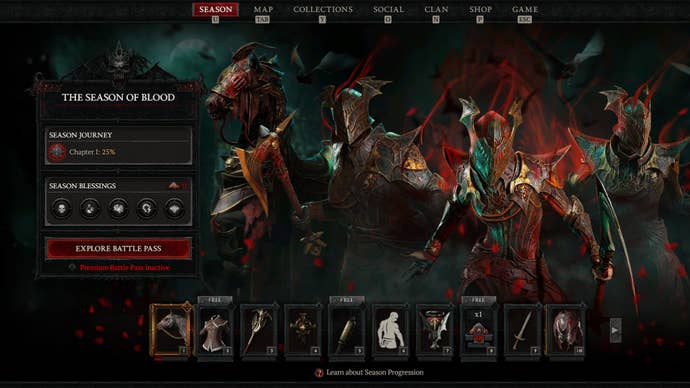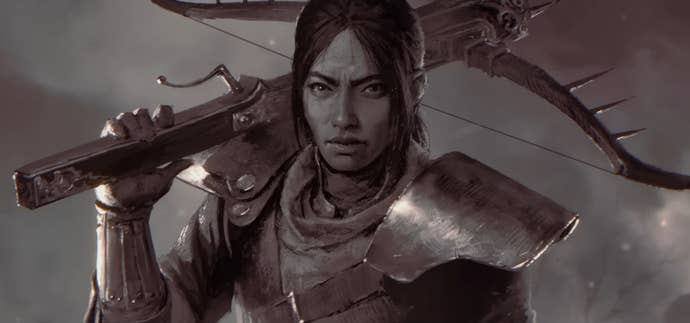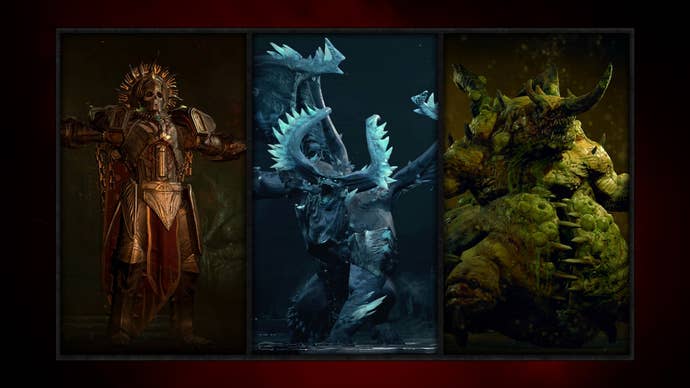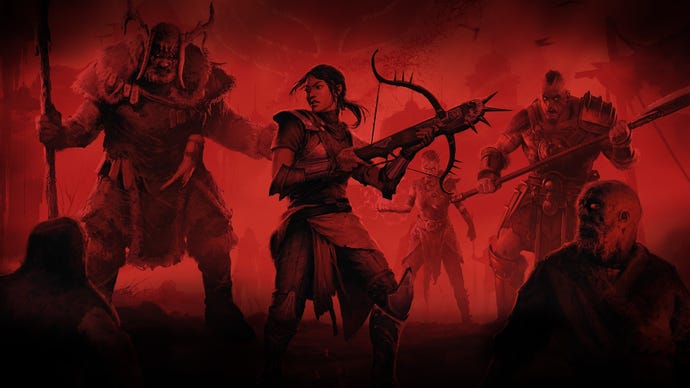Diablo 4’s Season of Blood is great, but only because the launch game was lacking
Despite not actually being Diablo 4’s first season, Season of Blood is a good first step to getting Diablo 4 on the right track.
For much of my life, I understood the term MVP to stand for most valuable player. But MVP takes on an altogether different meaning when applied to game development. More specifically, the sort of live service games intended to live on for years, and be built upon for as long as there’s money to be made.
The version of Diablo 4 that launched back in June was, for all intents and purposes, an MVP – minimum viable product. It was perfectly functional, had plenty of content, a variety of classes and environments, and even one of the smoothest launches for an online game in recent memory.
Despite that, it was hard to deny simply how many crucial features were missing, most of which were not only expected, but thought to be staples in the action RPG genre. In our review, Connor spoke very highly of the game, but admitted that “it could have been more.”
Season of Blood represents Diablo 4’s shift from the MVP of June, 2023 to the ongoing game Blizzard promised all those years ago. In software development, MVP refers to products that ship in functional states, but clearly lack major features. It is said that rolling out apps that way makes the feedback more impactful, and creates a shared sense of accomplishment among users as they witness something they like grow and get better.
That same practice of “moving fast and breaking things” is also why it’s never a good idea to be an early adopter of software, which now includes games. It’s not unusual, even for the best developers, to roll out hotfixes and smaller patches weekly or bi-weekly to continue improving a product they had just launched.
We can argue all day about the merits of this approach, and whether or not it belongs in video game development. But the point is that it’s here, and Diablo 4 is just the latest example of the concept in action.
The cracks started showing in Diablo 4 the closer you got to its endgame. After finishing the campaign, exploring all the different regions for their Renown rewards or whatever else, it became clear that the game simply doesn’t have enough for you to do after reaching level 50. Almost as if that part of the experience was being worked on right as the game shipped.
Season of the Malignant was an okay attempt at addressing some of the game’s shortcomings, but Blizzard initially came at it the wrong way, causing the now infamous clash that prompted a public apology and a change to how the studio approaches major patches in the future.

Season of Blood really is where things start getting interesting for Diablo 4. Its structure is almost identical to that of the first season. There’s a new quest chain that introduces a new character/boss, and recycles content that already exists by adding a few twists on it. The bulk of the new content lies in the new mechanic, which unlocks new powers and - for as long as the season runs, anyway - adds to the existing layers of the endgame, making the overall experience a little more diverse.
Season of Blood is not ambitious, and it’s telling that most players were excited about the quality of life changes and the return of missing features more than the new content. I went in expecting some sort of new environment (perhaps a new dungeon tileset or design), but maybe that’s asking too much.
As with the first season, the new character in this one does… exist. She vanishes just as quickly as she appears, and I genuinely have to question why – outside of the publicity it brings – Blizzard sought famous person Gemma Chan for the role. She’s a fine actor, but I don’t think any of her lines couldn’t have been delivered as well (or better) by a working voice actor.

For as much as I lament the money wasted on those celebrity stunt castings, Season of Blood improves the gameplay loop in the endgame immensely. The vampiric powers you can unlock genuinely make you feel unstoppable at times. It’s an extra layer of bonus abilities that does not interfere with your existing build.
Blizzard seems to have gotten the memo that players want to be feel more powerful, not less. The new endgame activity is where you can farm said powers, and it learns from existing endgame activities in a few big ways. It’s always active, available earlier, and has the monster density to get you what you want quickly and efficiently.
I have not fought any of the new bosses at the time of this writing, but I like the idea of each of them representing a certain element, requiring you to tailor your gear to be able to make it long enough into the fight. It’s a sort of Souls-like moment when you realise that you need to go back and put on all your poison-resist gear so you can counteract the boss’ poison buildup if you have any chance at defeating it.

I still think more can be done with the concept of seasons in a game like Diablo 4, and I do wonder if Season 4/5/6 will offer substantially more compared to what we’re given today. As I write this, however, I'm sitting on nearly 200 hours of playtime across seven characters since June. I am only really looking for an excuse to start a new one, which seasons have, so far, provided.
I do wonder, though, whether there will come a time when that’s no longer enough, especially with the competition heating up next year and beyond. It’s clear Blizzard is not abandoning the MVP approach. Season 2 just received its first patch, and wouldn’t you know it, it adds basic features to the new mechanic that should have been there at launch, but likely couldn’t make it out in time. That sort of thing is going to get quite old when you have to compete against two or more games. For now, though, I am happy to log in every week.







